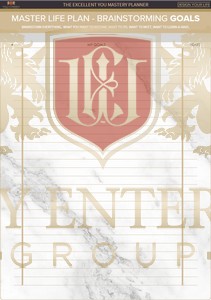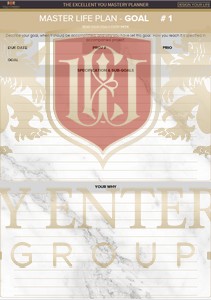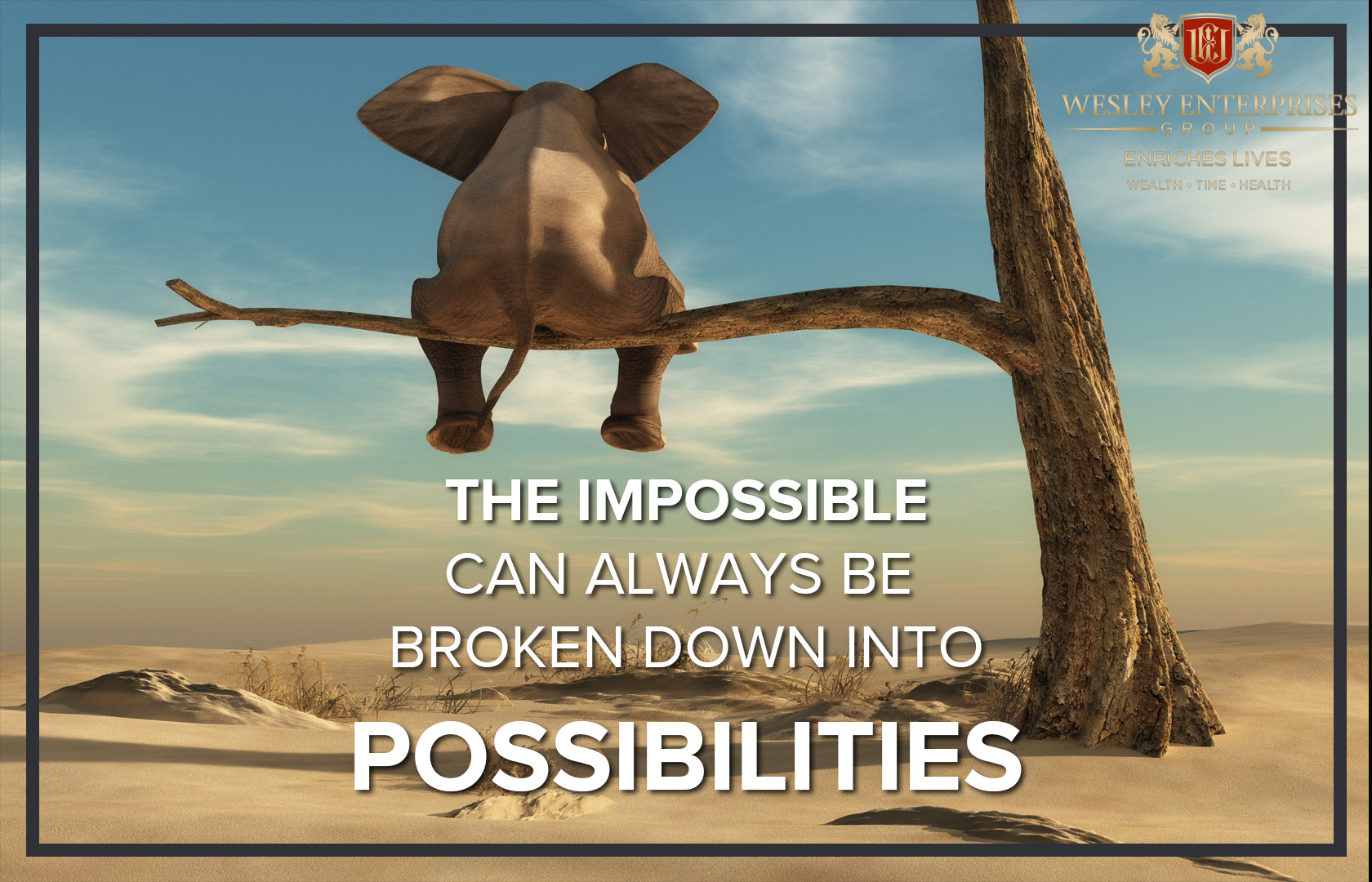Setting intentional and meaningful objectives is a necessary step in the route to living in alignment with your life purpose. Goals serve as the stepping stones between your vision and your daily actions. This self-guided exercise is intended to help you express, develop, and set goals that will move you toward the realization of your life vision and your purpose.
Goal-setting can be just as simple or advanced as you desire. The process that is presented below is a comprehensive method that will give you all the components to create the most effective goals that you can imagine. It will give you all the information you need to create a Massive Action Plan that will make you the most efficient person in achieving your goals.
You may do all the steps below, or you may want to choose to skip some of the steps to make it a little simpler. That is up to you.
1. Consider Your Life's Purpose and Vision (15 minutes):
- Begin by reviewing your life's purpose and vision statements. Connect to the underlying meaning behind things.
- Consider how your purpose and vision shape your objectives and decisions.
2. Determine Key Areas for Goal Setting – Categories Of Improvements (10-20 Minutes):
- Divide your vision into major life categories, such as career, relationships, personal development, health, and leisure.
- Identify the areas where you currently have the least success or progress and that are most relevant to your objective.
- Use the Wheel Of Personal Life and the Wheel of Professional Life
- Look at the wheel
- For each of the named categories; grade yourself from 0% to 100% satisfaction (or successful or current growth) withing the category
- Fill in the “pies” or “wedges” with a pen or color
- Evaluate the wheel;
- Consider this; what if you were riding a car or a bike with the wheel that you have just created – would that be a smooth ride??
- If not – you may consider defining goals for your personal or professional life where you work on growing the categories where you are currently weak.
- Make a note of where you are weaker. These are your Categories Of Improvement (COI’s)
- Make sure to do both wheels; both for your personal and your professional life
3. Brainstorming (10 minutes) 
- Take a piece of paper. Keep your Purpose and Vision statements in your mind. Visualize the results that you want to experience.
- Think about your areas where you are weaker (where you need to grow) from the Wheel Of Life exercise; Keep in mind your Categories Of Improvement
- Write down every goal that you can think of. Just let the pen flow over the sheet of paper. Don’t think. Don’t stop. Just continue to write for the next 10 minutes or so…
4. CREATING THE TIMELINE (10 minutes)
- Set a timeline for each of the goals that you brainstormed; On the right side of the sheet of paper, write down the number 1, 2, 3, 5, 10 or 20. This is the timeline for each goal. If you want to achieve one of your goals within 1 year, then you put a 1 to the right of your goal.
- Do the same until all goals has a number next to it
5. Rewrite your goals (10 minutes)
- Rewrite all your 20 years goals on a new sheet of paper
- Do the same for all goals; group the 10 years, 5, 3, 2, and 1 year goals on a new sheet of paper, one paper for each if the timelines
6. Prioritizing your goals (ABCDE) ( 10-20 minutes)
- Start with all the 20 years goals
- For each goal; prioritize your goals according to the following:
- A: Has MAJOR CONSEQUENCIES if NOT achieved
- B: Has MINOR CONSEQUENCIES if NOT achieved
- C: Has NO CONSEQUENCIES if NOT achieved / NICE TO HAVE done
- D: DELEGATE / DON’T DO YOURSELF to achieve these goals
- E: ELIMINATE all together / will not contribute to your life at all
- Do the same for goals with a timeline for 10, 5, 3, 2, and 1 years
7. Define your why (30 minutes): 
- For each of your goals, write down your WHY.
- Your WHY is the reason for you to want to achieve the specific goal. This is what drives you forward when you face obstacles on the way.
- The more emotions you can get into your vision and your goals, the more effort you will put into making them a reality, and the sooner you will achieve your target outcome.
8. Breakdown long-term goals (10 minutes)
- You need to verify your long-term goals and perhaps break them down to smaller pieces. For example; if you have a 20 year goal to have 2 million dollars for retirement in 20 years, you cannot start on working towards that goal in 20 years. You need to break it down into smaller pieces and put it on your goals lists for 10, 5, 3, 2 and 1 years.
- Look through all of your goals and break them down into smaller sub-goals, if you need to, and put them on the respective goals list.
9. detailing 1 YEAR goals (30 minutes)
- For each of your 1 year goals; write them down on a new sheet of paper
- Use the SMARTER syntax for detailing your goals
- S: SPECIFIC
Be specific when your write down your goals. Make sure to use as much details as necessary.
- M: MEASURABLE
Make sure that your target really is measurable. In most cases, the first time we write down a goal, we are formulating the target in a way that it is not measurable.
- A: ACHIEVABLE
Make sure that you have the tools and resources to achieve you goal.
- R: RELEVANT
Verify that the goal is relevant and important to you. Put your goal in relation to your vision and your purpose. Remember that your goal is a tool to realize your vision and live your purpose.
- T: TIME-BOUND
Make sure to set a time limit on your target. Be specific.
- E: ECOLOGICAL | EVALUATE
Reflect upon and consider if your goal is in line with your values and habits. Evaluate and reflect upon your progress and achievement.
- R: REWARD | RE-ADJUST
Depending on your progress and success in achieving your goal, you may need to re-adjust your goal. And remember to celebrate and reward yourself once you have achieved your goal.
The reason that you only specify your 1 year goals, in detail, is that the 1 year goals are the ones that you are going to work on. All the other goals are there to set the direction of your life. They act like a compass.
10. Set a deadline (20 minutes):
- Set a deadline for each of your 1 year goals. You do this by estimating when you should be able to achieve the defined outcome.
- The deadline for all your 2, 3, 5, 10 and 20 years goals is automatically set to December 31st of the respective year.
- Only set detailed deadlines for your 1 year goals. The reason that you don’t set deadlines for the other goals is that, if you work efficiently towards your 1 year goals, by the end of the first year you will have reached so much successes in your regards to your desired outcomes that your other goals may no longer be current for you.
- At the beginning of the second year, you will need to go through your 1 year goals and all your other goals and re-adjust them. Then you will also set specific deadlines for your 2 years goals, if they are still current for you.
11. Visual Representation of Goals (15 min):
- Make a graphic representation of your goals. This could be a chart, a mind map, or any visual format that appeals to you.
- Use this image as a visual reminder of your goals.
Setting objectives that are in line with your purpose is a dynamic and continuous process. This exercise is designed to help you include thoughtfulness into your goal-setting path. Through critical contemplation and strategic planning, you can create a road map that turns your mission and vision into measurable, attainable goals. As you embark on this self-guided goal-setting exercise, keep in mind that each goal is a step toward living a life that is true to your unique purpose.

![How to set effective GOALS [self-guided exercise]](/voe/images/misc/075059136.jpg)
![How to create your life VISION [Self-guided exercise]](/voe/images/Slideshow/frontpage/1680x1080/Frontpage_Slideshow_1680x1080_091.jpg)


